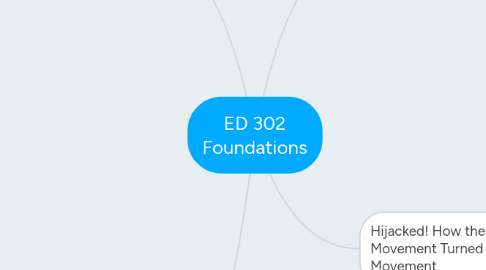
1. History of Education Ch.3
1.1. old deluder laws
1.1.1. 1640's
1.1.2. children must learn to read and write
1.1.3. est. a precedent for public responsibility
1.2. Rise of Common School
1.2.1. Horace Mann of Massachusetts
1.2.1.1. lobbied for State board of education 1837
1.2.1.2. annual reports for public school reforms
1.2.1.3. efforts led to first state teacher training school 1839
1.3. Education for All
1.3.1. Compulsory school laws
1.3.1.1. mandatory for children to go to school
1.3.1.2. 1890 27 states had them
1.3.1.3. 1919 all states had them
1.3.2. NEA
1.3.2.1. developed high school curriculum 1893
1.3.2.2. English, math, history, science, liberal arts
1.4. Equality of Opportunity
1.4.1. Plessy v. Ferguson
1.4.1.1. separate and equal
1.4.2. 1954 Brown v. Topeka Board of edu
1.4.2.1. segregation of schools was unconstitutional
1.4.2.2. reversed separate but
1.4.3. Brown II decision
1.4.3.1. ordered desegregation
2. The Sociology of Education
2.1. relation between School and Society
2.1.1. schools shape children's perceptions of the world by processes
2.1.2. schools promote gender definitions
2.1.2.1. segregated learning m/f
2.1.2.2. extracurricular activities by gender
2.2. Effects of Schooling on Individuals
2.2.1. Knowledge and Attitudes
2.2.1.1. higher social class higher achievement level
2.2.1.2. academically orientated schools produce higher rates of learning
2.2.1.3. discipline levels affect achievement levels
2.3. Inside the Schools
2.3.1. teacher behavior
2.3.1.1. teachers are models for students
2.3.1.2. teachers expectations influence students achievement
3. The Limits and Promises of Education Ch.1
3.1. Educational Problems
3.1.1. Achievement gaps
3.1.2. Urban Education
3.1.3. Literacy Decline
3.2. Understanding Education
3.2.1. History
3.2.2. Philosophy
3.2.3. Politics
3.2.4. Sociology
4. Hijacked! How the Standards Movement Turned into the Testing Movement
4.1. ANAR
4.1.1. Curriculum based
4.1.2. It was a report
4.1.3. Five new Basics
4.1.3.1. 4yrs English
4.1.3.2. 3yrs Math
4.1.3.3. 3yrs Science
4.1.3.4. 3yrs Social Studies
4.1.3.5. 1/2yr Computer Science
4.2. NCLB
4.2.1. George W. Bush
4.2.2. 2002 Federal Law
4.2.3. Reading,Math
4.2.4. Standardized Test Scores
